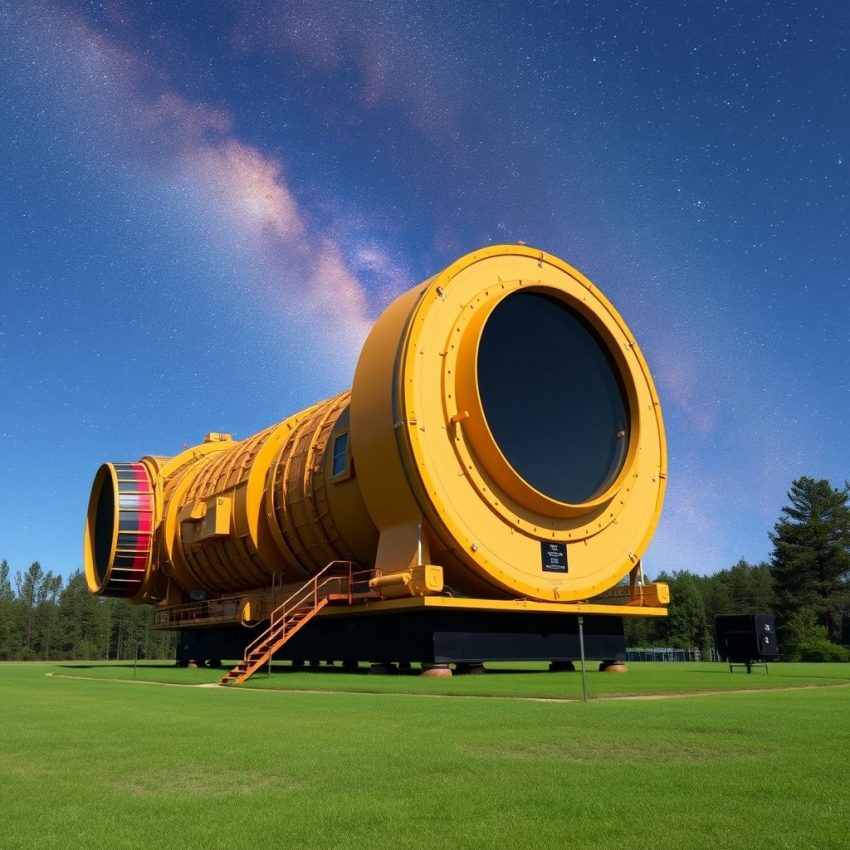Getting Ready for its Close-Up: The World's Largest Camera Prepares to Capture the Universe in Unprecedented Detail
The universe is vast, mysterious, and full of untold wonders. And soon, we'll be able to see it in more detail than ever before, thanks to the Legacy Survey of Space and Time (LSST) camera. This behemoth of imaging technology, the largest digital camera ever built, is finally ready to take its first 3,200-megapixel photos of the cosmos. Prepare to have your mind blown.
Imagine a camera lens the size of a small car. That's what we're talking about. The LSST camera, housed at the Vera C. Rubin Observatory in Chile, is a marvel of engineering. Its massive sensor, composed of 189 individual CCDs, will capture images so sharp they could resolve a golf ball from 15 miles away. But its target isn't golf balls; it's the universe itself.
Over the next decade, the LSST camera will embark on an ambitious survey, capturing images of billions of galaxies and trillions of stars. This unprecedented data trove will revolutionize our understanding of the cosmos, helping us unravel some of the universe's biggest mysteries:
- Dark Energy and Dark Matter: The LSST's precise measurements of galaxies' positions and movements will provide crucial insights into the nature of dark energy and dark matter, the invisible forces shaping the universe's expansion and structure.
- Near-Earth Objects: By scanning the skies repeatedly, the LSST will identify and track potentially hazardous asteroids, providing critical data for planetary defense.
- The Transient Universe: From supernova explosions to fleeting bursts of gamma rays, the LSST will capture the dynamic events that shape the universe, providing astronomers with a real-time view of cosmic change.
- The Milky Way Galaxy: The LSST will map our own galaxy in unprecedented detail, revealing the distribution of stars, gas, and dust and providing clues to its formation and evolution.
The first images from the LSST camera are a monumental achievement, marking the culmination of years of hard work and innovation. They are not just pretty pictures; they represent a giant leap forward in our ability to explore and understand the universe. These images are a testament to human ingenuity and our insatiable curiosity about the cosmos.
What can we expect from the LSST in the future?
The LSST is poised to generate a deluge of data, presenting both challenges and opportunities for astronomers. Sophisticated data processing and analysis techniques will be crucial for extracting meaningful insights from this wealth of information. The project will also foster international collaboration, bringing together scientists from around the world to unlock the secrets of the universe.
The LSST is more than just a camera; it's a time machine, allowing us to look back billions of years and witness the universe's evolution. It's a discovery engine, poised to reveal new phenomena and challenge our existing understanding of the cosmos. And it's a source of inspiration, reminding us of the vastness and wonder of the universe we inhabit. Stay tuned, because the most exciting discoveries are yet to come.
Don’t miss out on this exclusive deal, specially curated for our readers! Discover unbeatable flight + hotel deals
This page includes affiliate links. If you make a qualifying purchase through these links, I may earn a commission at no extra cost to you. For more details, please refer to the disclaimer page. disclaimer page.

